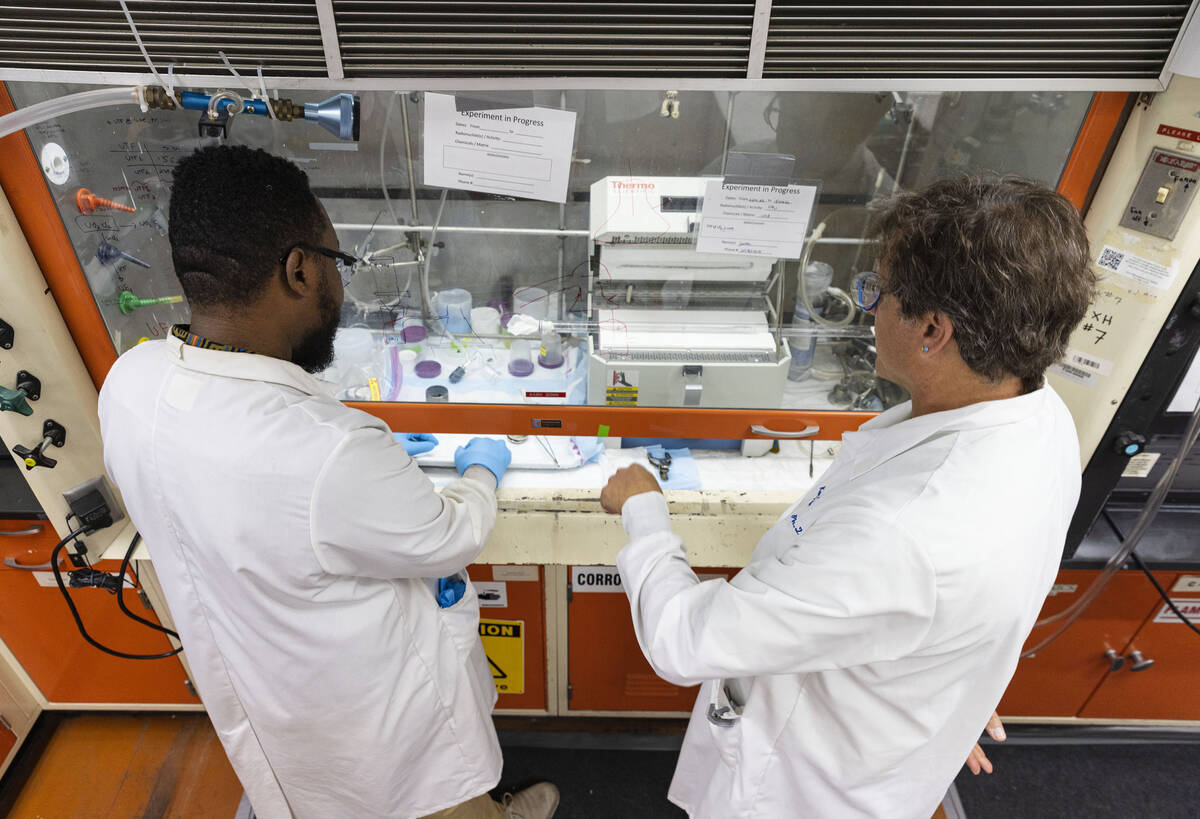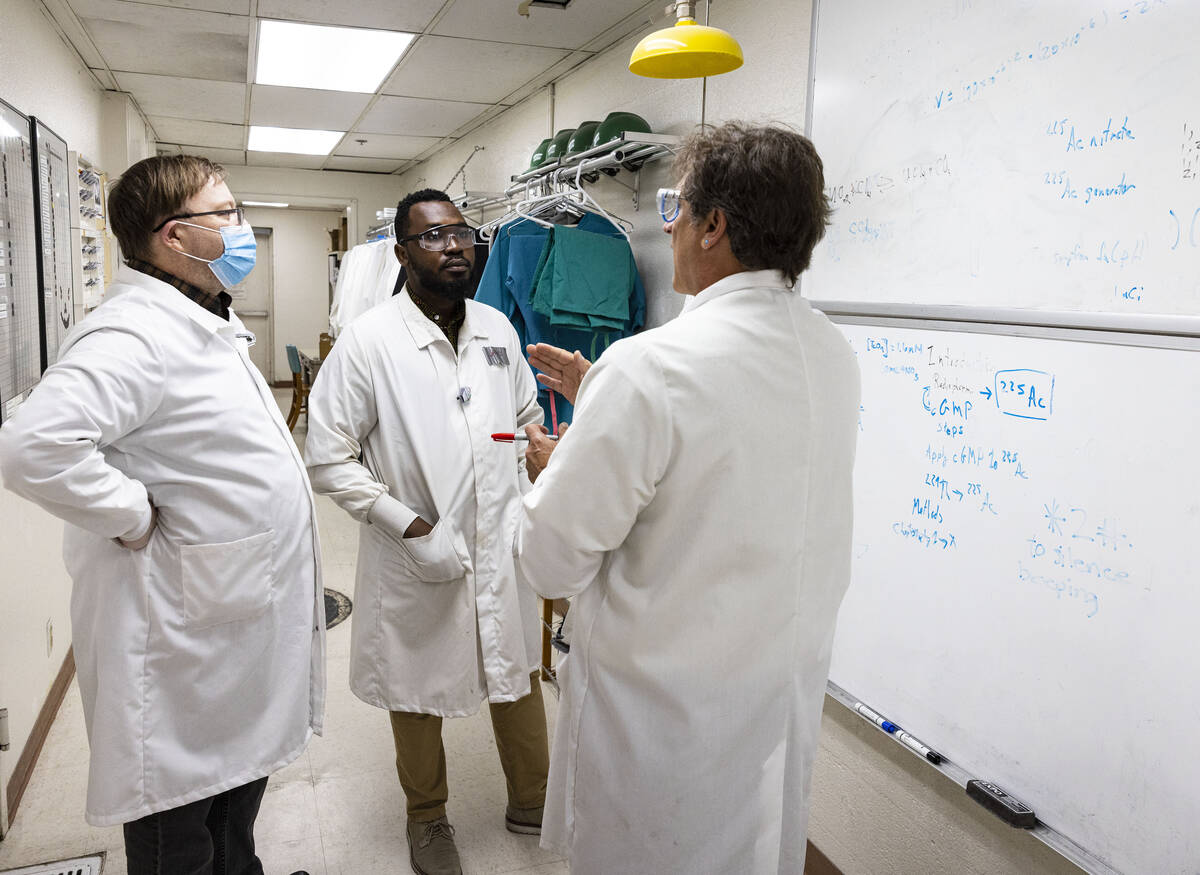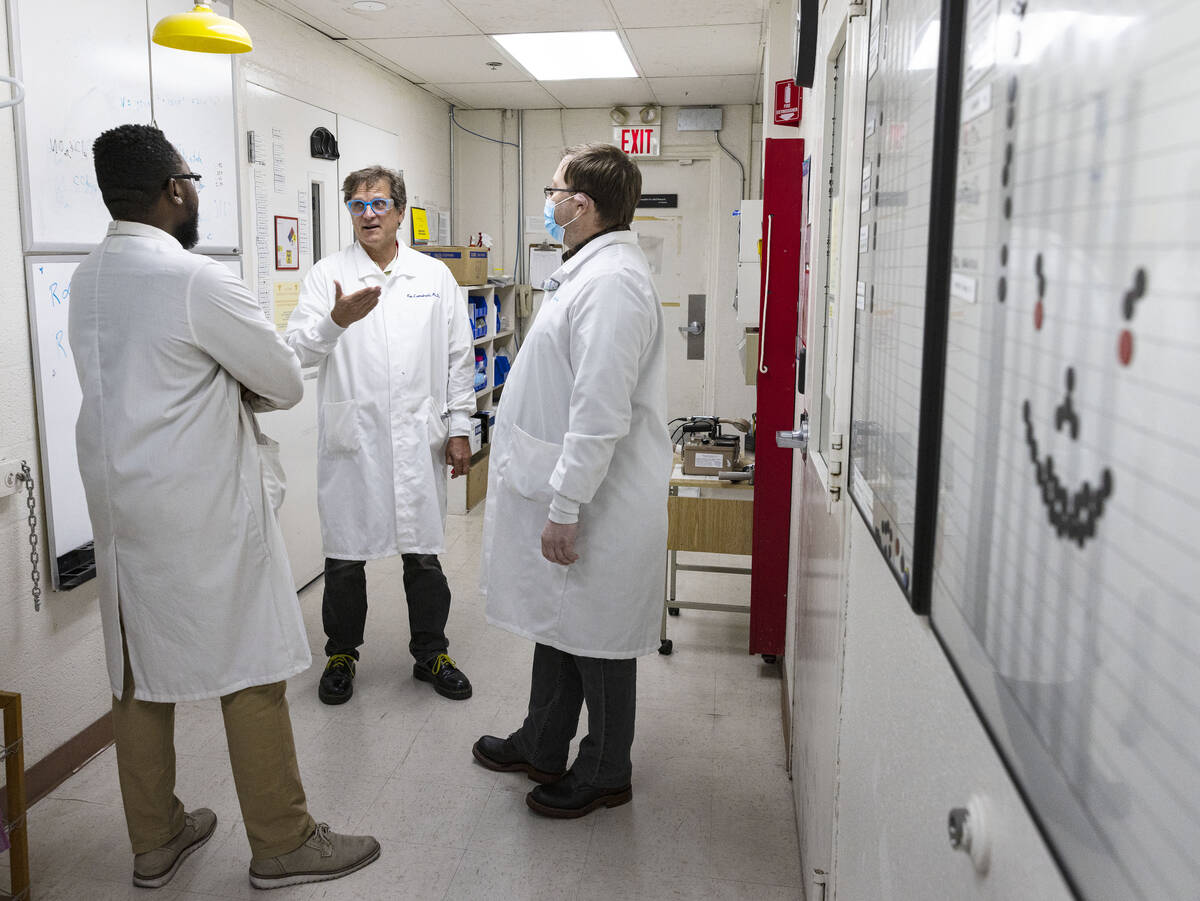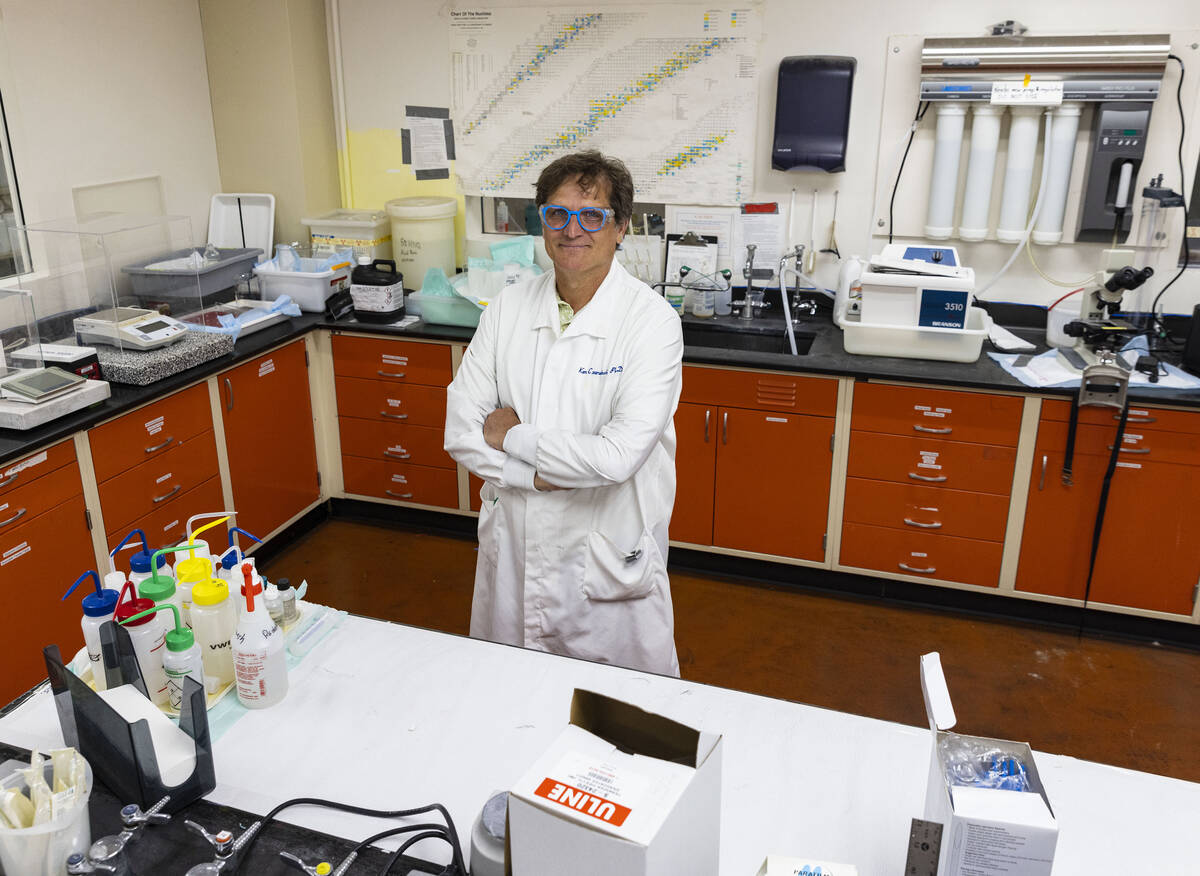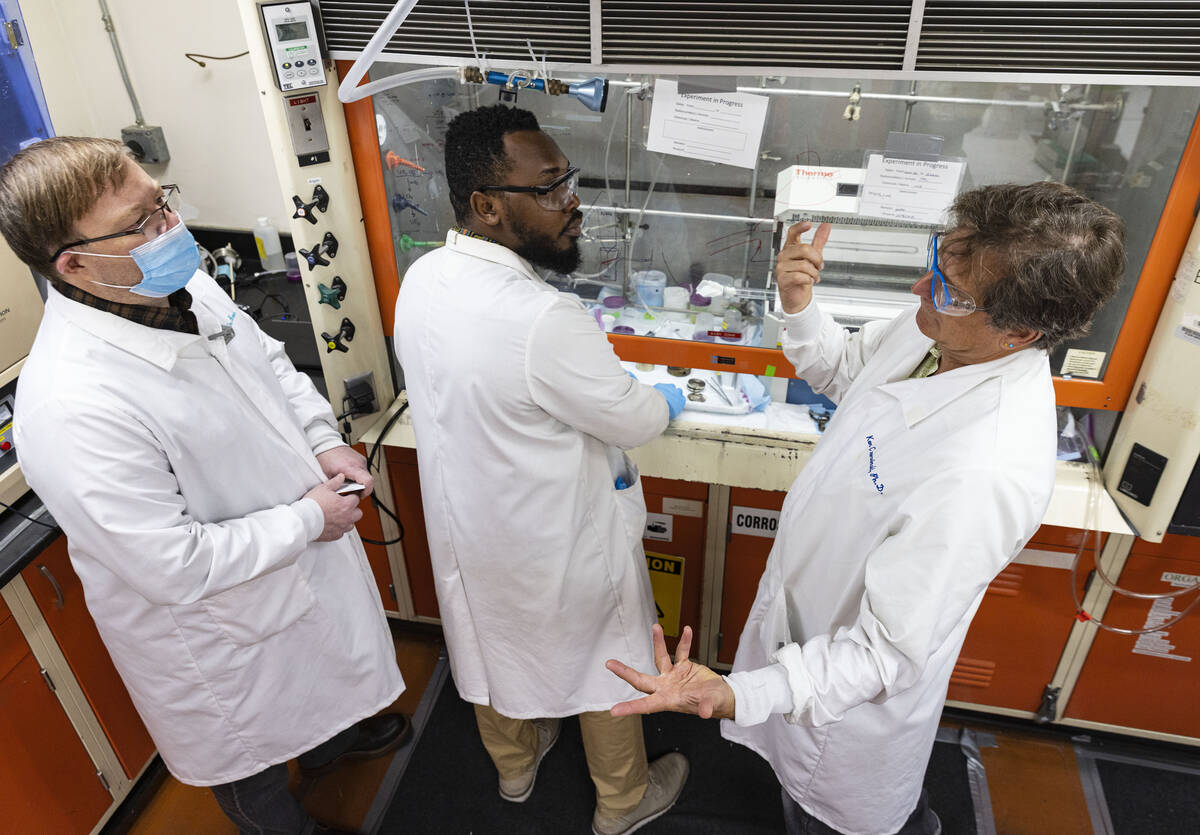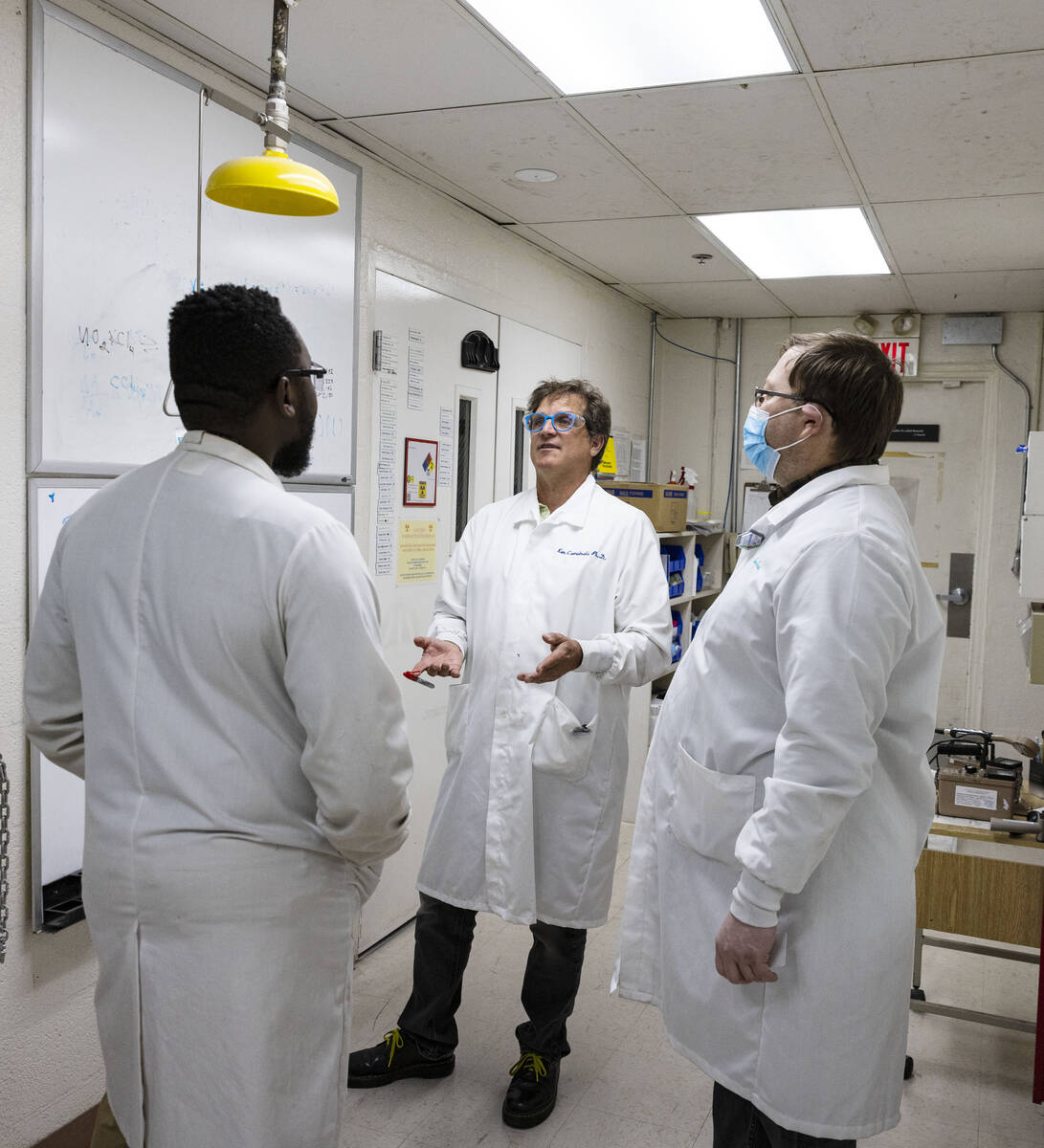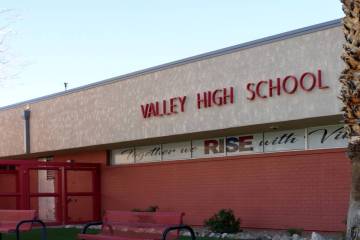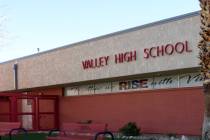UNLV part of $3M nuclear energy grant
UNLV researchers are part of a team that will receive nearly $3 million in federal funding for a project focusing on the nuclear energy workforce.
The Department of Energy announced last week more than $61 million in awards for 74 projects on technology development, infrastructure improvements and career opportunities at about 40 universities.
“These awards are an investment in both the next generation of nuclear technology and the next generation of scientists and engineers,” U.S. Secretary of Energy Jennifer Granholm said in a news release. “With funding from DOE, our nation’s universities will spur innovation and keep driving us toward our carbon-free future.”
UNLV radiochemistry professor Ken Czerwinski, who has been at the university since 2004, is the principal investigator for a three-year, $2.96 million project.
“A lot of it is going to be performing a gap analysis to understand what’s the necessary workforce for future nuclear development,” he said.
A goal is to develop an understanding of the workforce needs of those building reactors and how the education system can help, Czerwinski said.
UNLV is among only about a dozen universities in the country with a radiochemistry program, which focuses on studying radioactive elements, where students can earn a doctorate, he said, noting it’s a unique niche.
The university’s program also has the infrastructure to allow students to perform experiments that oftentimes universities would need to go to a national lab for instead, Czerwinski said.
As for the funded project, he said it’s exciting that it involves other UNLV disciplines, including non-science areas such as public policy.
Project collaborators include Alexander Barzilov, mechanical engineering professor at UNLV; Jaewon Lim, associate professor of public policy and leadership at UNLV; Morgan State University in Baltimore; University of Maryland; NuScale Power; and Impact Allies for research and evaluation.
The gap analysis will focus on the country as a whole, but “it really does come down to localized areas,” Czerwinski said, and what local entities can do to try to address those gaps.
It also will look at how to develop a pipeline from kindergarten through college to help develop a workforce, as well as developing educational content.
And the project will look at building an understanding of the supply and demand for workers, including how competing sectors play a role, Czerwinski said.
There are people who have technical competencies, “but there are lots of other jobs they can go into,” he said.
It’s also interesting that as a result of the COVID-19 pandemic, Czerwinski said, “a lot of the demand for the workers and supply has really changed.”
Contact Julie Wootton-Greener at jgreener@reviewjournal.com or 702-387-2921. Follow @julieswootton on Twitter.



